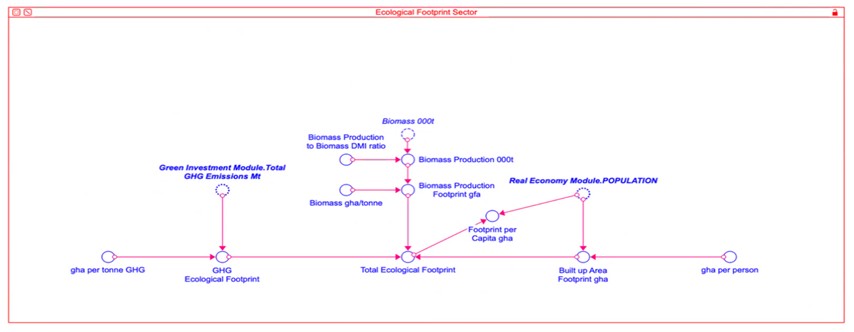
– Profile written by Bart Hawkins Kreps –
Roll the clock back almost two-hundred years, and pretend you are a far-sighted economist hearing about the new “Analytical Engine”. You immediately understand that this prototype computing machine might one day sort data far faster than any human brain could do, building elaborate skeins of calculations which can simulate the workings of complex systems. Perhaps such a machine could even create simulations of a national economy ….
If our early 19th-century economist had pursued this line of thought, he or she would likely have started by incorporating three key factors of production into the Analytical Engine’s model: Land, Labour, and Capital. It was simple common sense that Land – and the many land-based resources such as grain, vegetables, wood and wildlife – needed to be properly accounted for in any useful model of a national economy.
And yet, by the time electronic technology had made the promise of the Analytical Engine a reality, dominant schools of economics had dropped “Land” from its previous position at the foundation of economic science. As a result we now have computer models which do their best to track the interactions of Labour, Capital, and now Technology – but leave Land out of the picture.
York University post-doc researcher Andrew Reeves is putting Land back into the economic model. Specifically, he is working with York professor emeritus Peter Victor and with Ecological Footprint Initiative director Eric Miller, to integrate Ecological Footprint into the LowGrow model.
At the most basic level, Ecological Footprint research tries to estimate how much land, and how much of the biocapacity of that land, is required to support a nation’s economy. Andrew’s goal in his post-doc is to build that basic inquiry into the LowGrow model, allowing the model to make predictions about how future economic scenarios will interact with Ecological Footprint.
Andrew’s original academic pursuit was astrophysics, with a focus on star formation in galaxies. By the time he had earned his PhD from the University of Waterloo he had also become deeply involved in social justice issues including a union drive. His informal study of eonomics led him beyond finance to the basic ideas of ecological economics – where land and land-based resources remain fundamental.
His work in astrophysics included a lot of data analysis and modelling, so he already had key qualifications for his current work. He answered an ad for a post-doc position, and started his work at York in June 2024.
The Ecological Footprint Initiative manages and maintains a vast database of economic data from countries around the world. It is this data which is analyzed each year to produce calculations of how much Land each nation’s economy is using, and how much Biocapacity is available. About half of Andrew’s work involves helping to manage this database to produce the annual National Accounts. The other half of his project is to incorporate this data into an economic forecast model.
The LowGrow Model was developed by Peter Victor and Tim Jackson, through the UK-based Centre for the Understanding of Sustainable Prosperity (CUSP). Like some other economic models, LowGrow incorporates data on labour, consumption, production, capital stocks, money supply, and financial transactions. Unlike neoclassical economic models, LoGrow is Stock Flow Consistent, meaning it uses double-entry bookkeeping methods to ensure both Stocks and Flows balance out. And unlike economic models which implicitly assume economic growth has no inherent limit, LowGrow incorporates environmental constraints. Andrew’s task is to integrate the Ecological Footprint as a core component of the model.

The initial schematic for the Ecological Footprint module was rudimentary. But as you might expect, tracking all the interrelationships between material flows, labour, capital investment and finance is not at all simple.
By analyzing Ecological Footprint and other economic trends over multiple decades, Andrew developed a module that offers better predictive capacity for different simulation scenarios. The current module, which Andrew describes as “still a work in progress”, looks like this:

A time traveller from the 19th century would be amazed by the sophisticated electronic tools available today: the Analytical Engine has come so far, and in less than 200 years! As for Land being included in the Analytical Engine’s model of the economy, our 1830s economist would say “But of course! You have to start from the basics.”